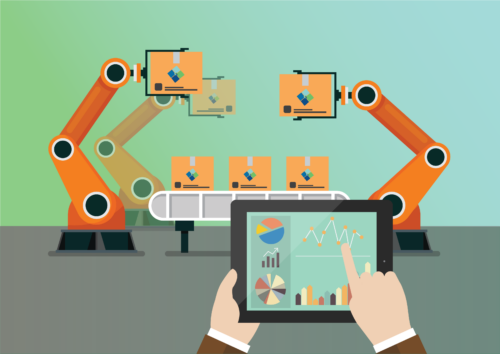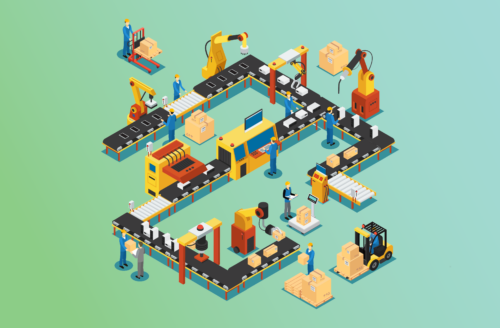Typically, during periods of economic turmoil, the construction industry takes a hit. Fewer families take the plunge into home ownership, businesses halt their expansion efforts, and new projects hit the pause button. But this recent economic downturn has been anything but typical.
In terms of projects and revenue, the construction industry is in the midst of vast success. Large businesses such as Tesla, Oracle, and HPE are breaking new ground in Texas which could portend a large scale commercial migration out of densely populated—and more importantly, heavily taxed—areas, namely Silicon Valley.
In terms of housing, many believe the next American housing boom is already underway. In July of 2020, new home sales surged 55%, largely in part due to the millennial generation entering the housing market for the first time. With some lending companies having their best fiscal year ever, many believe the wild events of 2020 have ushered in a new era for the construction industry.
Identifying The Problems
So this all sounds great, right? What could possibly be the problem?
The truth is, the number of qualified, capable adults in the construction industry is trending in the wrong direction, and has been for some time. Just like in most industries, the pandemic has underscored and exacerbated the severity of the problem. Older workers are seeking alternative employment over virus fears, and the pipeline bringing young, new workers into the industry is, for lack of a better phrase, running dry.
To make matters worse, even if you hire someone with a superb skill set, keeping them under your employ throughout the slow winter months can often prove too costly for small businesses. Large companies can lure talent away, leaving you back where you started—frantically looking for the next candidate. This vicious cycle doesn’t have to last forever.
The construction industry isn’t for everyone, but with competitive pay and benefits in a country struggling to stay employed, opportunity is aplenty. Let’s take a look at how your business can keep up with demand by demanding the best out of your hiring process.
Invest in Recruitment
Your hiring process may still resemble how it looked in the early days of your business. Sure, technology has evolved, but the core tenets of how your organization has scoured for talent has essentially stayed the same. With material costs rising as much as 50% this year, it can feel difficult, and almost irresponsible, to justify a total revamping of any facet of your business—especially the hiring process.

According to the Associated General Contractors of America (AGC), 81% of construction firms are reporting difficulty filling both salaried and hourly skilled labor positions. To make matters worse, 25% of firms surveyed said they “have not done anything” in terms of investing in the recruitment, training, and development of skilled workers.
So what can you do to buck this industry trend? To start, seek out organizations that look to lend a helping hand when it comes to procuring and training talent.
Associated Builders and Contractors, Inc. (ABC) offers education, hands-on training, and mentorship programs to both individuals and organizations. Similarly, many schools have increased their vocational training, providing viable alternatives to those not seeking to pursue a traditional collegiate education.
The point here? Look to invest in the services of organizations that are forward-thinking in their methods of attracting young talent. As you continue to grow your network and hiring pipeline, the goal is to position your business as the gold standard for what employees can expect in the construction industry.
Competitive Pay & Custom Benefits
One way to hire great talent? Pay them—a lot. The good news here is that “a lot” may not actually be all that much, relatively speaking. According to the U.S. Bureau of Labor Statistics, the average salary in the construction industry is about 20% higher than the median salary for all jobs.

Seemingly in a semi-permanent state of “under construction” since 1776, American construction workers have no shortage of hours—especially given that the coronavirus related project delays have begun to pick up steam again.
Competitive pay and availability of hours are obviously huge variables that employees consider when seeking work. The other substantial piece of the financial hiring puzzle is your company’s ability to offer benefits.
Employee benefits, on their own, are necessary. Most construction workers wouldn’t think of accepting an offer from a company that wasn’t able to them (especially health). One way to stand out? Offer benefit packages that are customizable.
According to MetLife’s 15th Annual U.S. Employee Benefit Trends Study, 74% of employees say that having the ability to customize benefits to meet their individual needs is important when exploring a new job opportunity. Enhanced benefit customization goes beyond attracting new talent—72% of employees say that loyalty to their current employer would increase if offered customizable benefits packages.
The Future Is Female
Throughout the hiring process—in pretty much every industry—a decent amount of pigeonholing takes place. Our hubris inhibits us from seeing that our process could be flawed. When we think we know exactly what we want, we put up our blinders and disregard whatever else may be in our path, even if that path is riddled with valuable, young talent.
Now, don’t misconstrue the point here—confidence in your process is a positive trait. But when it comes to hiring, it’s important to keep an open mind, even if you think you’ve found “the one.”

To start, there’s one major area that the construction industry is lacking in—the number of women in the field. In 2019, women comprised just 10.3% of the construction industry workforce. While this number represented an uptick of .04% compared to the previous year, it is still a far cry from equality.
It’s certainly not fair to assume that construction companies turn away women—that’s far from the case. The issue begins much earlier, and is much more innocuous. Young women simply don’t seek careers in construction. Organizations such as the National Association of Women in Construction (NAWIC) are looking to change that.
In the short term, they aim to be a viable resource that any woman interested in construction or contracting can turn to. Whether it be for education, networking, or career development, they seek to empower women in a field dominated by men. In the long term, they hope to make the current “boy’s club” of the construction industry a thing of the past.
Enlist Construction ERP Software
A plan is just a plan without the proper tools to see it through. When it comes to the jobsite, you know exactly what tools you need. But when it comes to the hiring process, do you know what should be in your toolbox?
Like everything else, it starts with organization. Between material costs, subcontractors, and winning bids, there’s a lot to think about before the thought of hiring is even mentioned. One of the most crucial assets you need to keep organized? Your list of desired candidates that you weren’t able to hire previously. Construction ERP software can manage all of this and more for your business.
Whether it was a down year, the offseason, or you simply didn’t have the payroll, there’s likely some candidates that you saw joining your business down the line. Too many times have those high quality job leads slipped through the cracks, getting lost in the shuffle over the years while their application gathered dust. Keep their resume, your notes about them, and all of their pertinent certifications in the same place the rest of your business runs.
While your new hires don’t necessarily need access to all of your business’s silos right away, it would make sense for all of your new and potential employees’ information to operate in the same space that the rest of your business does.
This type of all-in-one platform improves efficiency across the board. You can immediately see how the qualifications of your new hires mesh your existing team, and how they can best contribute. While you pride yourself on maintaining an injury free workplace, you know all too well how things can go awry during a first day. Using technology to keep your new hires close and informed will help you mitigate the risk of any first day jitter-induced accidents.
Wrapping Up
As your business prepares for the work the coming year will bring, take a minute to think about what the years after that will look like. How much will your company grow? How will you empower the next generation of employees? How do you know where to invest your hard earned revenue?
During this self-reflection, remember to look at the facts. The demand for new projects—both commercial and residential—are abundant, but the employees—namely women—are not. Technology is here to help you along the way, but ultimately it will be you and the people you employ that continue to make your business successful for years to come. The future doesn’t wait for anyone, so make sure you go out and do something about it today.






![[A Better Process For] Scheduling and Dispatching](https://www.striven.com/wp-content/uploads/FSMSchedulingBlog-e1652971927378.png)








